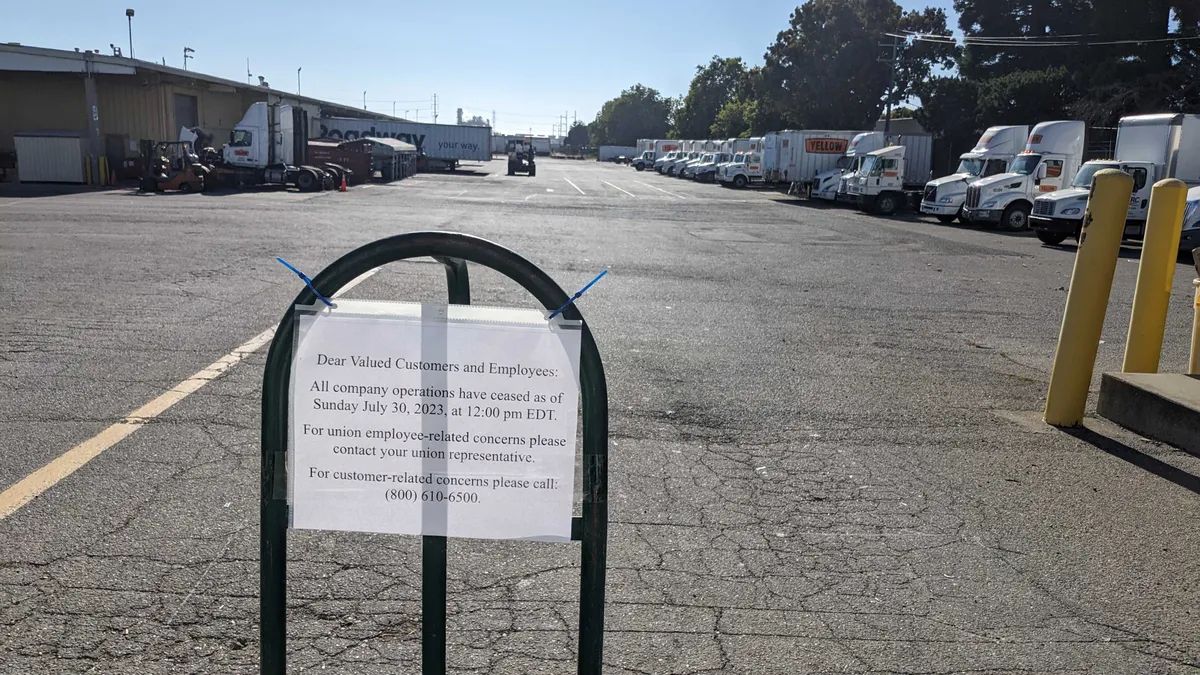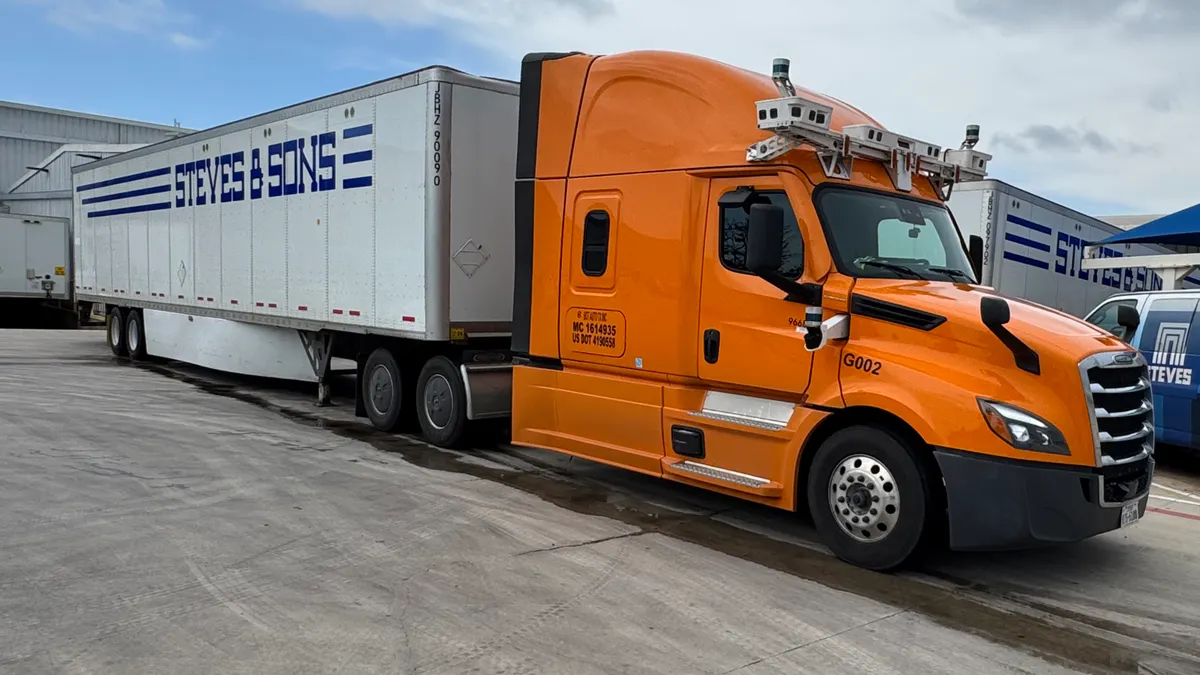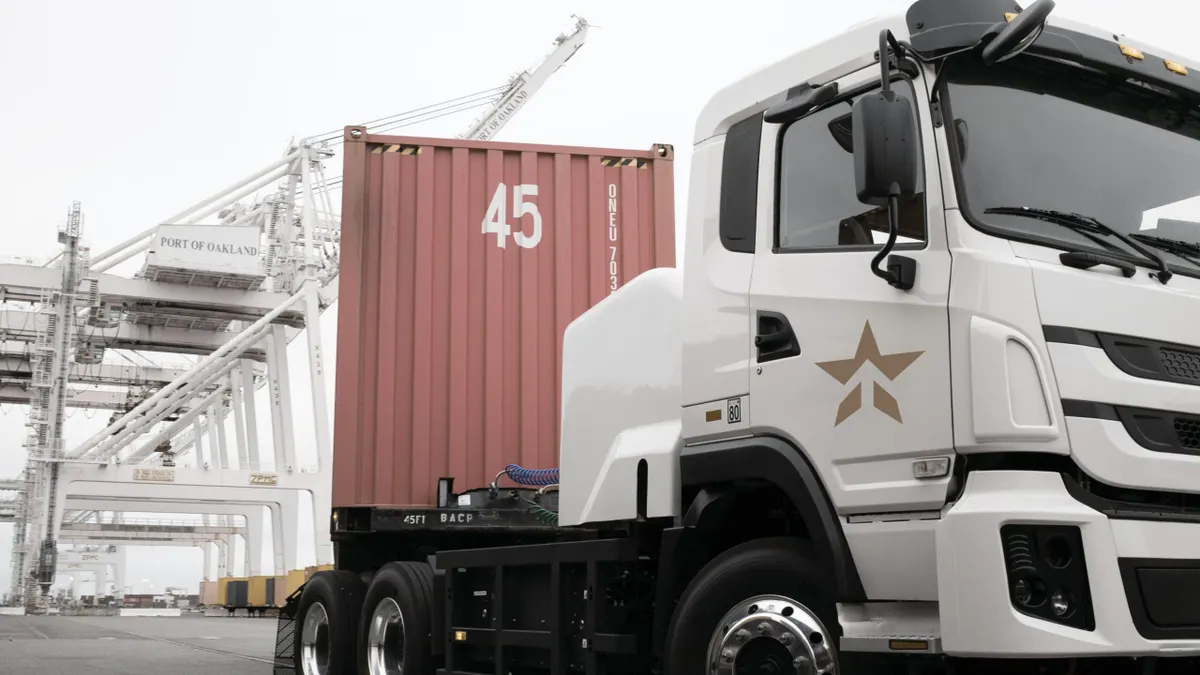Yellow Corp. officially filed for Chapter 11 bankruptcy on Sunday, Aug. 6, marking the demise of a nearly century-old carrier that grew into an LTL giant through a series of acquisitions it failed to fully integrate.
“It is with profound disappointment that Yellow announces that it is closing after nearly 100 years in business,” Yellow CEO Darren Hawkins said in a statement. “Today, it is not common for someone to work at one company for 20, 30, or even 40 years, yet many at Yellow did. For generations, Yellow provided hundreds of thousands of Americans with solid, good-paying jobs and fulfilling careers.”
Before laying off thousands of workers and ceasing operations at the end of July, Yellow was one of the major U.S. trucking companies and the third-largest LTL carrier, with about 30,000 employees across the country. The company was also the largest union LTL employer, with 22,000 Teamsters workers.
Now, the company goes down as the largest trucking bankruptcy in history.
While in Chapter 11, Yellow is looking to sell off its assets, which include real estate, thousands of trucks, trailers, and other forms of operational equipment, according to a court document. The company hopes to conduct an auction Oct. 18. Yellow and its investment bankers began marketing its assets ahead of bankruptcy and so far has provided due diligence materials to 63 unnamed parties, and the company hopes more interest will emerge post-filing.
Yellow has come close to folding four other times since the Great Recession, including a pandemic-era crisis that was averted after the trucking firm received a $700 million bailout from the U.S. Treasury in a COVID-19 relief aid package. The Treasury became a large shareholder in the process, making the government a key creditor for the upcoming bankruptcy proceedings.
In its bankruptcy announcement, Yellow blamed the International Brotherhood of Teamsters for its demise, saying the union had obstructed its One Yellow network overhaul and cost the company more than a hundred million dollars in profit losses from the delays.
“We faced nine months of union intransigence, bullying and deliberately destructive tactics,” Hawkins said. “A company has the right to manage its own operations, but as we have experienced, IBT leadership was able to halt our business plan, literally driving our company out of business, despite every effort to work with them.”
Under One Yellow, the company sought to change working rules, sell 28 terminals to pay off debt and combine its YRC Freight, Reddaway, New Penn and Holland subsidiaries. But a prolonged battle with the union delayed the plan, and in June, the company filed filed a $137 million lawsuit against the Teamsters, accusing the union of “unjustifiably blocking” One Yellow.
The union has repeatedly argued past concessions helped keep the company afloat in previous times of hardship.
“Yellow may try to use the courts to eradicate its financial responsibilities, but they can’t escape the truth. Teamster families sacrificed billions of dollars in wages, benefits, and retirement security to rescue Yellow,” Teamsters General President Sean M. O’Brien said in an Aug. 7 statement.
When the carrier missed pension and benefit payments for June and advised it would do so again for July, the Teamsters gave notice it would strike. The carrier blamed the union for its inability to make the payments.
The union averted the strike in the 11th hour, negotiating a deal with the Central States Health and Welfare Fund to allow Yellow to defer the payments and keep employees covered.
But the strike threat spooked customers, who didn’t want their shipments potentially stuck in Yellow’s network. Freight diversions accelerated until as much as 80% of Yellow’s volumes fled to other carriers, according to T.D. Cowen.
“Customers fled and business was not recoverable,” Hawkins said in the bankruptcy news release.
The carrier stopped picking up customers’ new freight and put up its brokerage for sale before saying it would liquidate.
It is facing a class-action lawsuit led by a California dockworker, claiming the company failed to give the required 60 days’ notice before laying off employees.
Beyond Yellow, the last major LTL bankruptcy was Consolidated Freightways, which had 14,500 union workers and 5,500 non-union employees when the company went under in 2002, according to an American Shipper report from the time.
Editor's note: This story has been updated to include a statement from the International Brotherhood of Teamsters. Edwin Lopez contributed to this story.




















